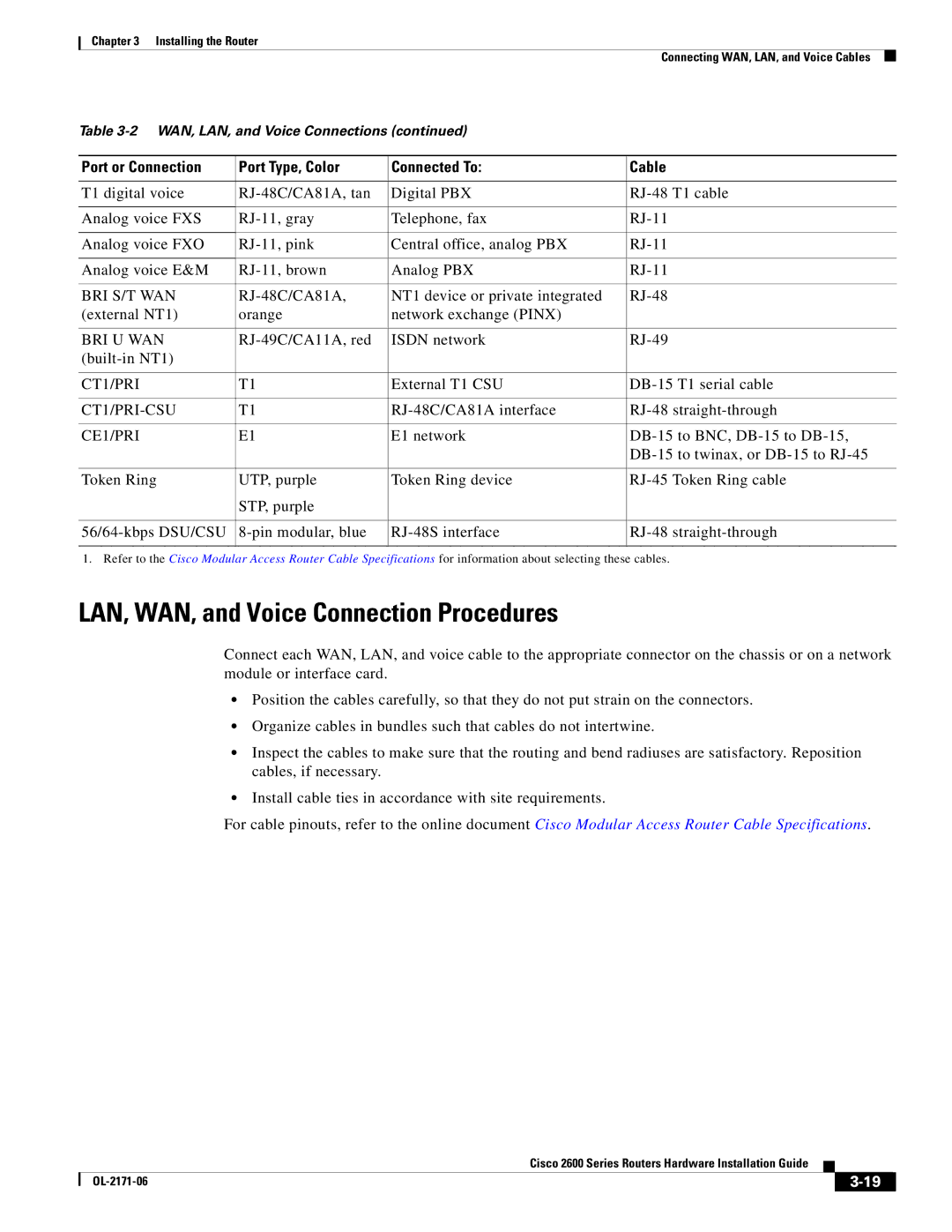
Chapter 3 Installing the Router
Connecting WAN, LAN, and Voice Cables
Table
Port or Connection | Port Type, Color | Connected To: | Cable |
|
|
|
|
T1 digital voice | Digital PBX | ||
|
|
|
|
Analog voice FXS | Telephone, fax | ||
|
|
|
|
Analog voice FXO | Central office, analog PBX | ||
|
|
|
|
Analog voice E&M | Analog PBX | ||
|
|
|
|
BRI S/T WAN | NT1 device or private integrated | ||
(external NT1) | orange | network exchange (PINX) |
|
|
|
|
|
BRI U WAN | ISDN network | ||
|
|
| |
|
|
|
|
CT1/PRI | T1 | External T1 CSU | |
|
|
|
|
T1 | |||
|
|
|
|
CE1/PRI | E1 | E1 network | |
|
|
| |
|
|
|
|
Token Ring | UTP, purple | Token Ring device | |
| STP, purple |
|
|
|
|
|
|
|
|
|
|
1. Refer to the Cisco Modular Access Router Cable Specifications for information about selecting these cables.
LAN, WAN, and Voice Connection Procedures
Connect each WAN, LAN, and voice cable to the appropriate connector on the chassis or on a network module or interface card.
•Position the cables carefully, so that they do not put strain on the connectors.
•Organize cables in bundles such that cables do not intertwine.
•Inspect the cables to make sure that the routing and bend radiuses are satisfactory. Reposition cables, if necessary.
•Install cable ties in accordance with site requirements.
For cable pinouts, refer to the online document Cisco Modular Access Router Cable Specifications.
Cisco 2600 Series Routers Hardware Installation Guide
|
| ||
|
|
